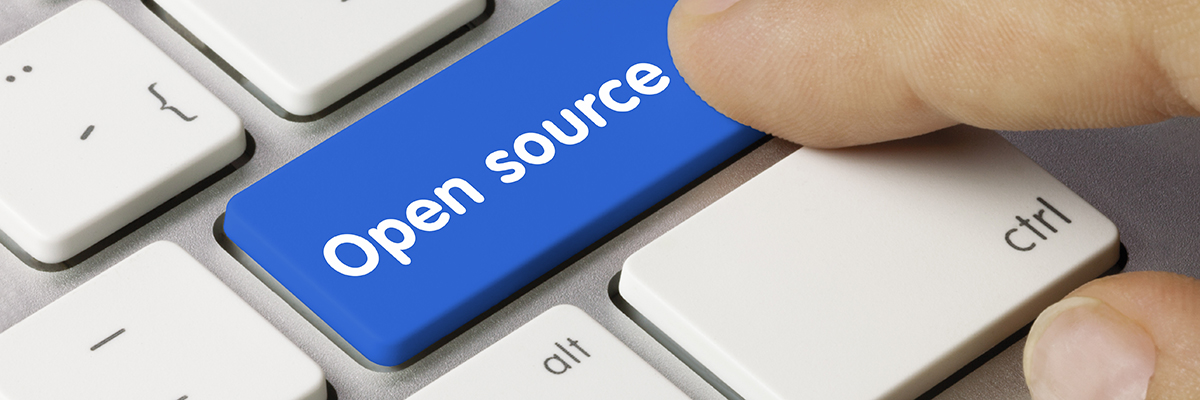Coming up today, is an interesting story that happened 13 years ago, when I began a 100-day exercise to shift my personal computer from using pirated proprietary software to completely open source software.
The itch
It was 2003 and I was growing up to be a typical computer graduate with no money to invest in legal software licenses. I had a personal computer at home loaded with pirated Windows XP running pirated Microsoft Office, pirated Visual Studio for learning .NET and well, all kinds of pirated software tools obtained from pirated CDs, trial software with their limits breached and software downloaded via peer-to-peer sharing networks. It was then that two things happened. First, I started feeling pangs of guilt. As a soon-to-be professional software developer, I felt that I lacked respect for my own industry by cheating on them. Secondly, I was introduced to the movie, ‘The Code‘, which describes the journey of Linux as an operating system from 1991 to 2001, featuring Richard Stallman and Linux Torvalds among other open source gurus. Something clicked inside me and I felt that I found the solution. I could run software legally on my computer while still not ending up paying a fortune. I embarked on a journey to convert my computer from a haven of pirated activity to the world of open source software. The journey was hard, but the sense of achievement, the peace of mind and the satisfaction that I got at the end of it was so immense that 13 years on, I have never had to turn back to proprietary software for anything ever again. In fact, I have now built a career on open source technologies for a decade.
The approach
Conversion from proprietary to open source is a big habit shift and old habits die hard. When you start out changing habits in a massive way, the way to go is in small steps. If you wipe out Windows and install Linux and start using it all in a single day, the experience is really perplexing. It is very important to give your brain the time to unlearn old habits and give way to new ones. That is why the 100-day goal. The method was to attempt to relinquish one proprietary solution to make way for an open source one, spend some time learning it and make it stick so that you could operate it blindfolded! (That was an exagerration!) In addition, our household had only one personal computer, so I invested in another fresh hard disk, so that I could use it for Linux. Multi-booting out of a single hard disk is possible, but it could cause pain if the startup menu is not installed correctly. Other members of my household had far too much important data to lose, especially my mother, who was following a Ph.D. during that time. Caution and patience were the main virtue.
Open source tools for Windows
My initial days were spent scouring the Internet for tools that could replace some of the most common software tools I was using. My most common tools of choice were the following and here is how I replaced them.
- Office suite: Pirated Microsoft Office to OpenOffice.org (OpenOffice is now called LibreOffice and is in its 5th version). Head over here to check out LibreOffice.
- Drawing and photos: Pirated Adobe Photoshop to GIMP. You can get GIMP from here.
- Programming: After convincing myself that single platform languages like the Microsoft-only .NET were not viable in the future and with Java adapting itself to desktops (Java Standard), servers (Java Enterprise), feature phones (Java Mobile), I chucked .NET completely and started learning Java, Python and PHP to address software solutions for different needs. I also polished up my long lost C/C++ skills.
Find out more about Java, Python and PHP. - Music: Windows Media Player was chucked in favour of the millions of options available. VLC easily made it to my favourite during that time.
Here is where you can get more information about and download VLC player. - Browser: Finally said goodbye to Internet Explorer 6 and started adjusting to life with Firefox. Nowadays, it seems like common sense. Google Chrome was still not released then. Firefox is available here. Google Chrome here.
- Video: VLC player came in for Windows Media Player.
- Audio editing: I was using a cracked version of Goldwave, but then I ran into Audacity, which I am still using today. Audacity can be downloaded from here.
- Burning CDs and DVDs: InfraRecorder did the trick for me. More details here. No more reliance on Nero.
- Games: A FIFA fan during those days, I realised that computer games were a waste of my time and stopped playing them altogether. This may not be an option for you, but the world of games is generally closed source and also very expensive. Please remember that having even one pirated software / product violates our final goal. So, if you cannot live without computer games, please be fair to the awesome game developers and buy your copy. As for me personally, my weekend FIFA binge sessions were converted to cross-town bicycle rides and mountain hiking and in general, the healthy outdoors!
With more such adjustments and daily practice, I became fairly fluent using the open source alternatives. The above list is in no way complete. But putting out the list must have given you a general idea about how to go about achieving the conversion in tiny steps. Please spend some time seeking out open source solutions for proprietary tools that you are currently using. More often than not, there is an alternative.
Next, I was ready to make a big jump. Could I shutter down Windows and start using Linux full time? Find out in part 2 which is coming soon.
